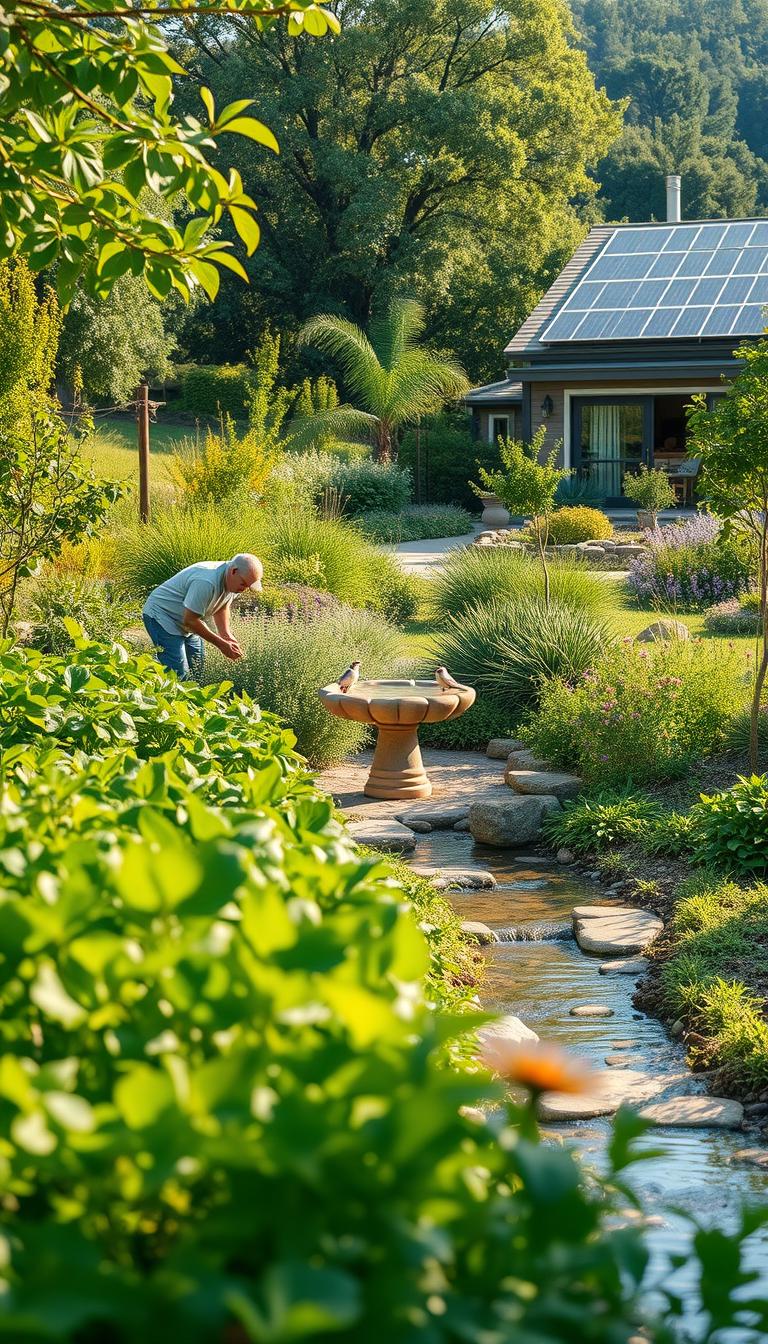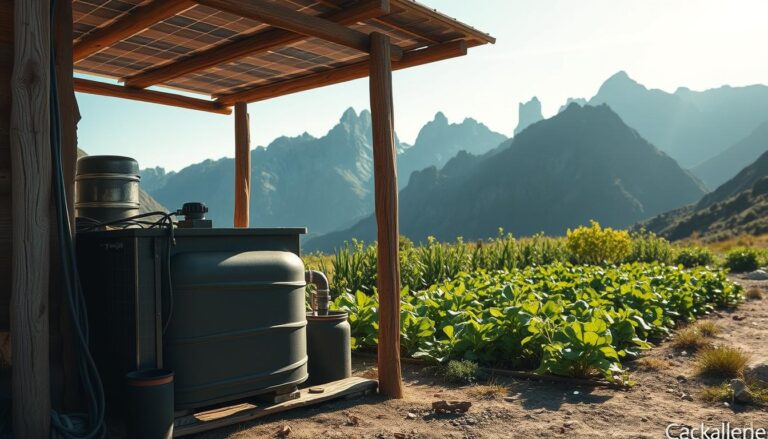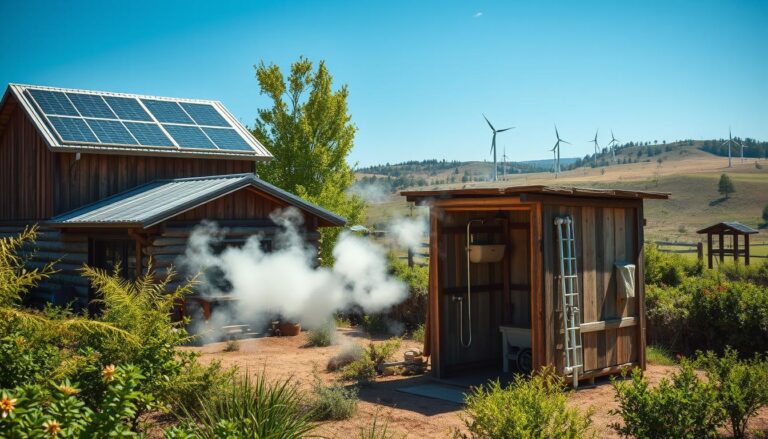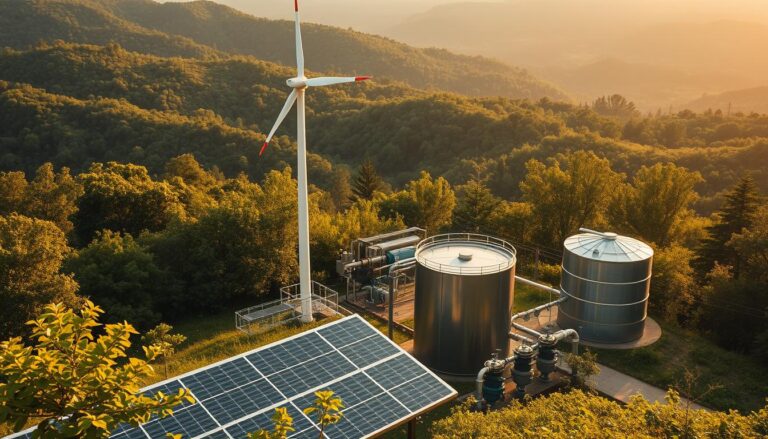5 Sustainable Water Usage Practices to Adopt
Water is a precious resource that makes our planet unique and habitable. As we face the challenges of climate change and environmental degradation, conserving water has become more crucial than ever.
Are you aware of the impact your daily water usage has on the environment? From taking long showers to watering your lawn, every drop counts. Adopting sustainable water practices is not just a moral obligation, but a necessary step towards ensuring a livable future.
Conserving water is easier than you think. By implementing simple changes in your daily routine, you can significantly reduce your water footprint. In this article, we’ll explore practical ways to make your water usage more sustainable.
Key Takeaways
- Simple changes can significantly reduce water waste
- Adopting sustainable water practices benefits the environment
- Conserving water ensures a sustainable future
- Daily habits impact water consumption
- Practical solutions can be implemented at home
The Growing Importance of Water Conservation
As freshwater becomes increasingly scarce, the need for effective water conservation strategies has never been more pressing. With only 3% of the Earth’s water being freshwater and most of it locked in ice and glaciers, the reality of water scarcity is a harsh one.
Global Water Scarcity Statistics
The United Nations reports that 2.3 billion people live in water-stressed areas, a number that’s expected to grow due to population expansion and climate change. This growing demand on already limited water resources underscores the importance of adopting water conservation tips to mitigate the effects of scarcity.
The Environmental Impact of Excessive Water Usage
Excessive water usage not only depletes this vital resource but also has significant environmental impacts. It can lead to reduced water levels in rivers and lakes, affecting ecosystems and wildlife habitats. Moreover, excessive groundwater extraction can cause land subsidence and decreased water quality.
Water Conservation in the United States
In the U.S., efforts to conserve water are gaining momentum. States like California have implemented strict water conservation measures, including restrictions on water usage for landscaping and promoting the use of eco-friendly water usage practices. Other states are following suit, recognizing the long-term benefits of conserving this vital resource.
| State | Water Conservation Measure | Impact |
|---|---|---|
| California | Restrictions on landscaping water usage | Significant reduction in water waste |
| Florida | Promotion of water-efficient appliances | Increased adoption of eco-friendly practices |
| Texas | Rainwater harvesting incentives | Reduced demand on municipal water supplies |
By embracing water conservation tips and eco-friendly water usage practices, we can work towards a more sustainable future.
Understanding Your Current Water Footprint
Understanding your household’s water usage is crucial for adopting sustainable practices. To start, you need to calculate your current water footprint.
How to Calculate Your Household Water Usage
To calculate your household water usage, you can start by checking your water meter. Take a reading at the beginning and end of a 24-hour period when no water is used. The difference will give you your daily water usage. You can also estimate your water usage by calculating the water used by each fixture and appliance.
Common Sources of Water Waste in American Homes
Leaky faucets and toilets are among the most common sources of water waste. A single dripping faucet can waste up to 20 gallons of water per day. Fixing leaks is a simple yet effective way to reduce water waste.
| Activity | Water Usage |
|---|---|
| Brushing teeth with tap running | 4-5 gallons |
| Showering (10 minutes) | 50 gallons |
Using Water Bills to Track Consumption
Your water bill can provide valuable insights into your water usage patterns. Look for trends and peaks in your consumption to identify areas where you can improve. By being more mindful of your water usage, you can adopt effective water-saving techniques.
The Benefits of Sustainable Water Practices
Sustainable water practices offer a multitude of benefits, ranging from environmental advantages to financial savings. By adopting these practices, homeowners can significantly contribute to a more sustainable future.
Environmental Advantages
One of the primary benefits of sustainable water consumption is the reduction in environmental impact. Conserving water helps preserve natural resources, protect ecosystems, and maintain the balance of nature. This, in turn, supports biodiversity and ensures that water remains available for future generations.
Financial Savings for Homeowners
In addition to environmental benefits, sustainable water practices lead to significant financial savings. By reducing water waste and using water more efficiently, homeowners can lower their water bills. This not only benefits individual households but also contributes to the overall economic well-being of the community.
Reducing Strain on Local Water Infrastructure
Furthermore, adopting environmental water practices helps reduce the strain on local water infrastructure. By conserving water, the demand on treatment plants and distribution systems decreases, potentially delaying or eliminating the need for costly upgrades.
5 Ways to Make Your Water Usage More Sustainable
Making your water usage more sustainable is easier than you think. By implementing a few simple changes, you can significantly reduce your water footprint and contribute to a more environmentally friendly future.
Overview of Effective Water Conservation Strategies
There are several effective water conservation strategies that can be implemented in your daily life. These include installing water-efficient fixtures and appliances, implementing rainwater harvesting systems, and adopting water-wise landscaping techniques. By incorporating these practices, you can significantly reduce your water usage.
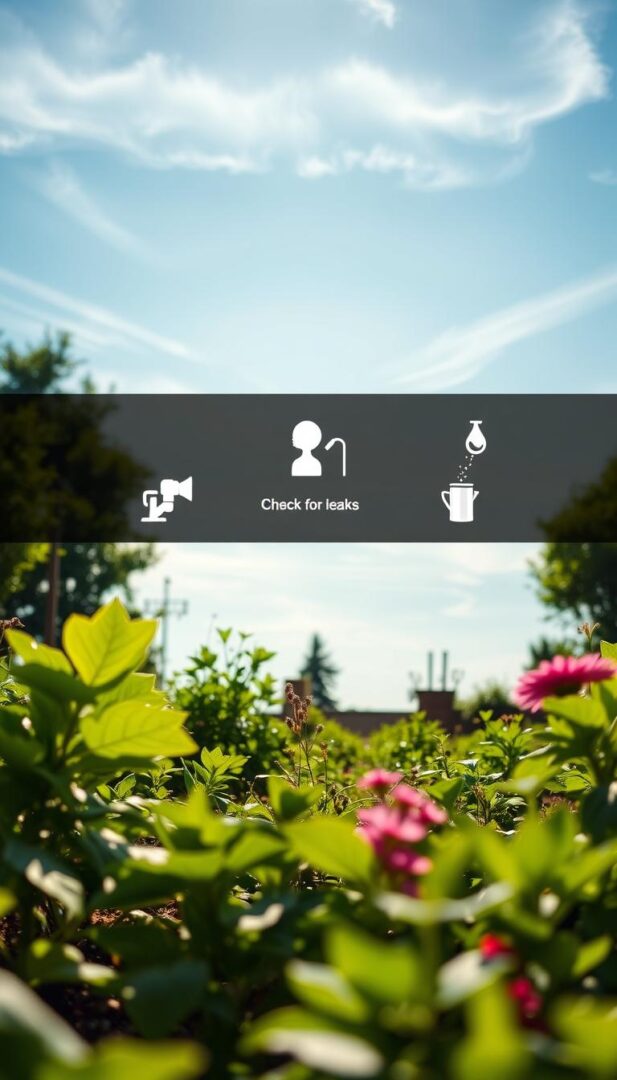
How These Practices Work Together
These water conservation strategies work together to create a comprehensive approach to sustainable water usage. For example, installing low-flow showerheads and faucets can reduce water usage, while implementing rainwater harvesting systems can provide an alternative source of water for non-potable purposes.
Setting Realistic Water Conservation Goals
To achieve significant water conservation, it’s essential to set realistic goals. Start by assessing your current water usage and identifying areas for improvement. Then, set specific, achievable goals, such as reducing your water usage by a certain percentage within a specific timeframe.
Practice1: Installing Water-Efficient Fixtures and Appliances
Installing water-efficient fixtures and appliances is a crucial step towards achieving eco-friendly water usage. By upgrading to low-flow fixtures and energy-efficient appliances, homeowners can significantly reduce their water consumption.
Low-Flow Showerheads and Faucets
Low-flow showerheads and faucets are designed to use less water while maintaining the same level of performance. WaterSense labeled products are certified to be at least 20% more efficient than standard models.
WaterSense Labeled Products
When shopping for low-flow showerheads and faucets, look for products with the WaterSense label. This label indicates that the product has been tested and certified to be water-efficient.
Installation Tips and Considerations
Installing low-flow showerheads and faucets is relatively straightforward. However, it’s essential to follow the manufacturer’s instructions to ensure proper installation and to check for any leaks after installation.
Water-Efficient Toilets and Their Impact
Water-efficient toilets can significantly reduce water consumption in the home. Dual-flush systems and toilet tank modifications are two effective ways to make toilets more water-efficient.
Dual-Flush Systems
Dual-flush toilets offer two flush options: a full flush for solid waste and a reduced flush for liquid waste. This feature can lead to substantial water savings over time.
Toilet Tank Modifications
For older toilets, modifying the tank by installing a displacement device or adjusting the flapper can also reduce water usage.
ENERGY STAR Appliances for Water Conservation
ENERGY STAR certified appliances, such as washing machines and dishwashers, are designed to be both energy and water-efficient.
Washing Machines
ENERGY STAR certified washing machines use advanced technologies like sensor-driven wash systems to minimize water consumption.
Dishwashers
Similarly, ENERGY STAR certified dishwashers are designed to use less water while providing effective cleaning.
By incorporating these water-efficient fixtures and appliances into their homes, Americans can make a significant impact on water conservation efforts.
“Conserving water is essential for the health of our planet. Simple changes, like installing water-efficient fixtures, can make a big difference.”
Practice2: Implementing Rainwater Harvesting Systems
Rainwater harvesting offers a simple yet effective method for conserving water. By collecting and storing rainwater, households can reduce their reliance on municipal water supplies, thereby decreasing their water footprint.
Basic Rainwater Collection Methods
Basic rainwater collection involves using rain barrels or modifying gutters to collect and store rainwater. Rain barrels are a popular choice for small-scale collection.
Rain Barrels and Their Setup
Rain barrels are typically placed under downspouts to collect rainwater flowing from rooftops. They come in various sizes, and some are equipped with features like overflow valves and spigots for easy water access.
Gutter Modifications for Collection
Gutter modifications can enhance rainwater collection efficiency. This may include installing gutter guards to prevent debris from clogging the system and ensuring that downspouts direct water into collection barrels or tanks.
Advanced Rainwater Harvesting Systems
For larger or more complex setups, advanced rainwater harvesting systems are available. These include underground cisterns and sophisticated filtration options.
Underground Cisterns
Underground cisterns provide a larger storage capacity and can be used for more extensive water needs. They are particularly useful for households with larger gardens or those looking to use rainwater for non-potable purposes.
Filtration Options
Filtration systems can be integrated into rainwater harvesting setups to improve water quality. These systems range from simple filters to more complex treatment technologies.
Practical Uses for Collected Rainwater
Collected rainwater can be used for various purposes, including garden irrigation and non-potable household uses.
Garden Irrigation
Rainwater is ideal for garden irrigation due to its natural, untreated quality. Using rainwater for gardening reduces the demand on municipal water supplies and lowers water bills.
Non-Potable Household Uses
Rainwater can also be used for non-potable household purposes, such as flushing toilets or washing cars. This further reduces the household’s water footprint.
| Use | Benefits |
|---|---|
| Garden Irrigation | Reduces municipal water demand, lowers water bills |
| Non-Potable Household Uses | Decreases water footprint, supports water conservation |
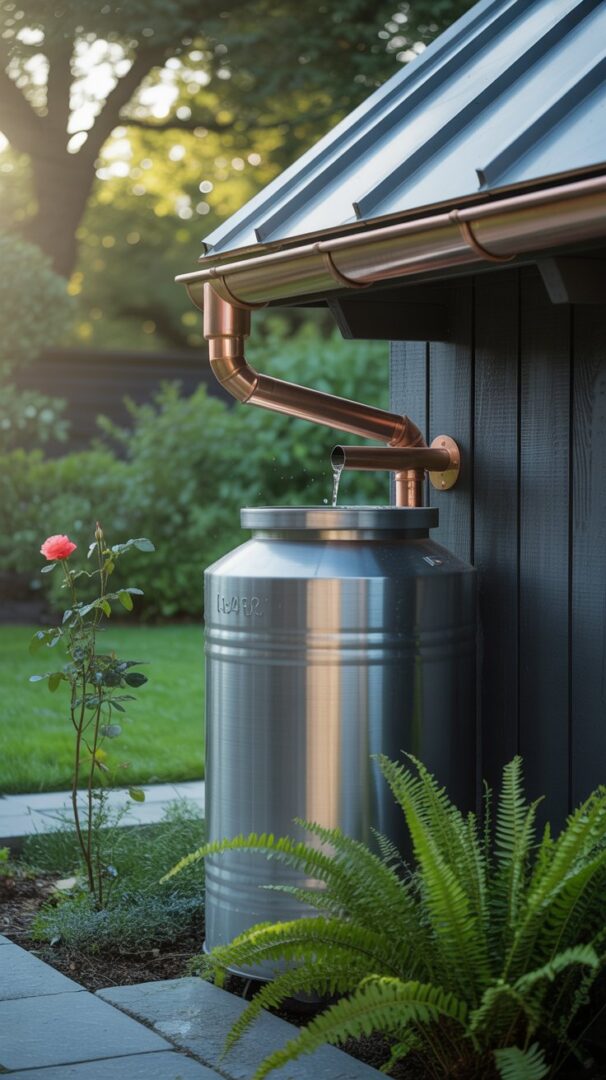
Practice3: Adopting Water-Wise Landscaping Techniques
Embracing water-wise landscaping techniques can significantly lower your water bills and contribute to a more sustainable environment. This approach to landscaping focuses on reducing water consumption while maintaining the aesthetic appeal of your outdoor spaces.
Xeriscaping Principles for American Climates
Xeriscaping is a landscaping method that originated in drought-prone areas. It emphasizes the use of low-water plants and efficient irrigation systems.
Soil Improvement Techniques
Improving soil quality is crucial for effective xeriscaping. Techniques include adding organic matter like compost to enhance soil’s water-holding capacity.
Mulching Benefits and Methods
Mulching is another key aspect of xeriscaping. It involves applying a layer of material (such as wood chips or straw) to the soil surface to retain moisture and suppress weeds.
Drought-Resistant Native Plants
Choosing the right plants is vital for water-wise landscaping. Drought-resistant native plants are ideal as they are adapted to local climate conditions.
Regional Plant Selection Guide
Different regions have different native plants. For example, succulents are suitable for dry, sunny areas, while plants like lavender thrive in well-drained soils.
| Region | Recommended Plants |
|---|---|
| Southwestern US | Succulents, Desert Marigold |
| Northeastern US | Lavender, Black-eyed Susan |
Transitioning Your Existing Garden
Transitioning to water-wise landscaping doesn’t mean starting from scratch. You can gradually replace water-intensive plants with drought-resistant ones.
Efficient Irrigation Systems
Efficient irrigation systems play a crucial role in water-wise landscaping. They ensure that plants receive the right amount of water without wastage.
Drip Irrigation
Drip irrigation delivers water directly to the roots of plants, minimizing evaporation and runoff.
Smart Sprinkler Controllers
Smart sprinkler controllers adjust watering schedules based on weather conditions, ensuring that your garden receives the right amount of water.
By adopting these water-wise landscaping techniques, homeowners can significantly reduce their water consumption and contribute to a more sustainable future.
Practice4: Modifying Daily Water Usage Habits
Modifying daily water usage habits is a crucial step towards achieving sustainable water practices. By making simple changes in our daily routines, we can significantly reduce our water consumption and contribute to a more water-efficient future.
Bathroom Water Conservation Tips
The bathroom is one of the largest consumers of water in the home. Implementing water-saving strategies here can have a significant impact.
Shower Efficiency Techniques
One of the most effective ways to conserve water in the bathroom is by optimizing shower habits. Taking shorter showers and installing low-flow showerheads can save gallons of water.
Sink Usage Optimization
Turning off the tap while brushing teeth or washing hands can save up to 4 gallons of water per day. Installing faucet aerators can also reduce water flow without compromising performance.
Kitchen Water-Saving Techniques
The kitchen offers numerous opportunities for water conservation. By adopting efficient practices, households can significantly reduce their water usage.
Dishwashing Best Practices
Running full loads in the dishwasher and using the energy-saving cycle can help reduce water consumption. For hand washing, filling the sink with water instead of running the tap continuously can save a substantial amount of water.
Food Preparation Water Conservation
Using a bowl to wash fruits and vegetables instead of running water over them can save water. Additionally, thawing frozen foods in the refrigerator or at room temperature rather than under running water is another effective strategy.
Laundry Water Efficiency Strategies
Laundry is another area where water conservation efforts can yield significant results.
Full-Load Washing
Washing full loads of laundry maximizes the efficiency of water use. This simple habit can reduce water consumption by ensuring that the washing machine is used to its full capacity.
Cold Water Washing Benefits
Washing clothes in cold water not only saves energy but also helps in conserving water by reducing the need for hot water. Most detergents are designed to work effectively in cold water, making this a practical and efficient choice.
| Water Conservation Tip | Estimated Water Savings |
|---|---|
| Shorter Showers (5 minutes) | Up to 20 gallons per day |
| Turning off Tap while Brushing | Up to 4 gallons per day |
| Full-Load Dishwasher | Up to 10 gallons per cycle |
| Cold Water Laundry | Energy savings and reduced hot water usage |
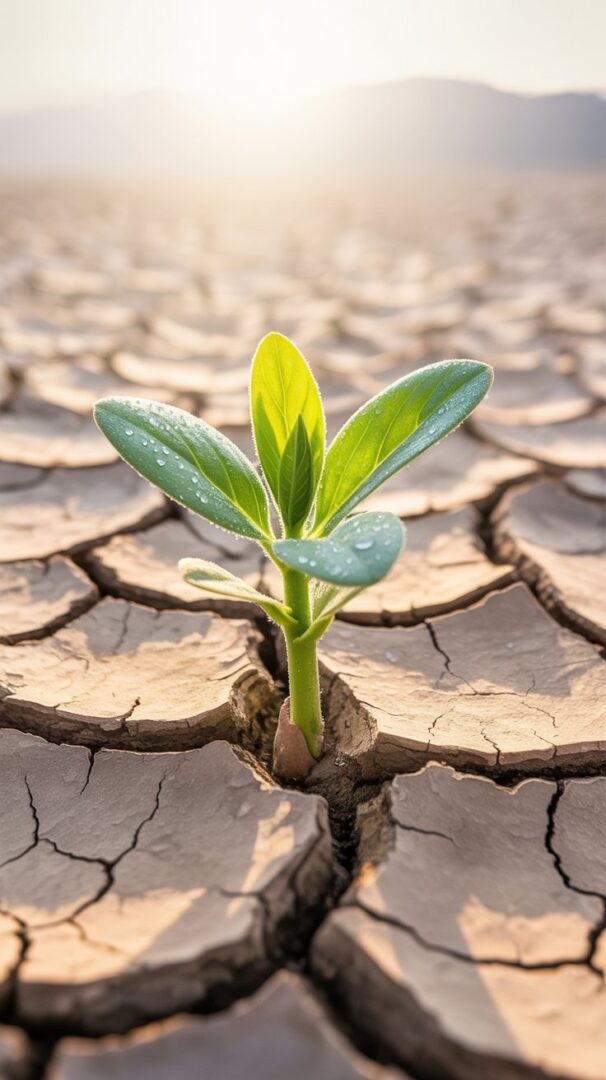
By implementing these simple yet effective strategies, households can make a significant impact on their water usage. Every small change counts, and collectively, these changes can lead to substantial water conservation.
Practice5: Detecting and Repairing Water Leaks
One of the simplest yet most effective ways to conserve water is by detecting and repairing leaks. Water leaks can lead to significant water waste, increased utility bills, and potential damage to your home. By identifying and fixing these leaks, homeowners can adopt a crucial water-saving technique that contributes to sustainable water consumption.
Common Household Leak Sources
Leaks can occur in various parts of a household plumbing system. Understanding where leaks commonly occur can help in early detection and repair.
Toilet Leaks and Fixes
- Check for toilet leaks by using food coloring in the tank. If the color appears in the bowl without flushing, there’s a leak.
- Common causes include worn-out flappers or improperly adjusted float arms.
Faucet and Pipe Inspection
- Faucet leaks often result from worn-out O-rings or gaskets.
- Inspect pipes under sinks and around water heaters for signs of moisture or water droplets.
DIY Leak Detection Methods
Several DIY methods can help detect leaks without hiring a professional.
Water Meter Monitoring
- Turn off all water-using appliances and fixtures.
- Check the water meter. If it continues to move, there’s a leak somewhere in your plumbing system.
Dye Testing for Toilet Leaks
As mentioned, using dye in the toilet tank can reveal leaks. This simple test can save water and money.
When to Call a Professional Plumber
While many leaks can be detected and fixed by homeowners, some situations require professional expertise.
Signs of Serious Plumbing Issues
- Low water pressure throughout the house.
- Visible water damage or warping of floors and walls.
Finding Water-Conservation Focused Professionals
Look for plumbers who specialize in water conservation. They can provide solutions that not only fix leaks but also improve overall water efficiency.
By adopting the practice of detecting and repairing water leaks, homeowners can significantly contribute to sustainable water consumption. Regular checks and timely repairs are simple yet effective water-saving techniques that benefit both the household and the environment.
Overcoming Common Challenges in Water Conservation
Water conservation efforts often face hurdles, but with the right strategies, these can be overcome. Adopting sustainable water practices is a commendable goal, yet it comes with challenges that need to be addressed for successful implementation.
Addressing Initial Investment Concerns
One of the primary challenges is the initial investment required for water-saving technologies and fixtures. While these may seem costly upfront, they offer significant long-term savings. For instance, installing low-flow showerheads and faucets can reduce water consumption substantially.
Maintaining Motivation for Water-Saving Habits
Maintaining motivation is crucial for sustaining water-saving habits over time. Setting realistic goals and tracking progress can help keep individuals motivated. Simple actions, like turning off the tap while brushing teeth, can make a significant difference.
Dealing with Household Resistance to Change
Resistance from household members can be a significant barrier. Educating everyone about the importance and benefits of water conservation can help. Creating a household water conservation plan together can foster cooperation.
| Challenge | Strategy | Benefit |
|---|---|---|
| Initial Investment | Long-term savings calculation | Reduced water bills |
| Maintaining Motivation | Setting realistic goals | Sustained water conservation |
| Household Resistance | Education and planning | Increased cooperation |
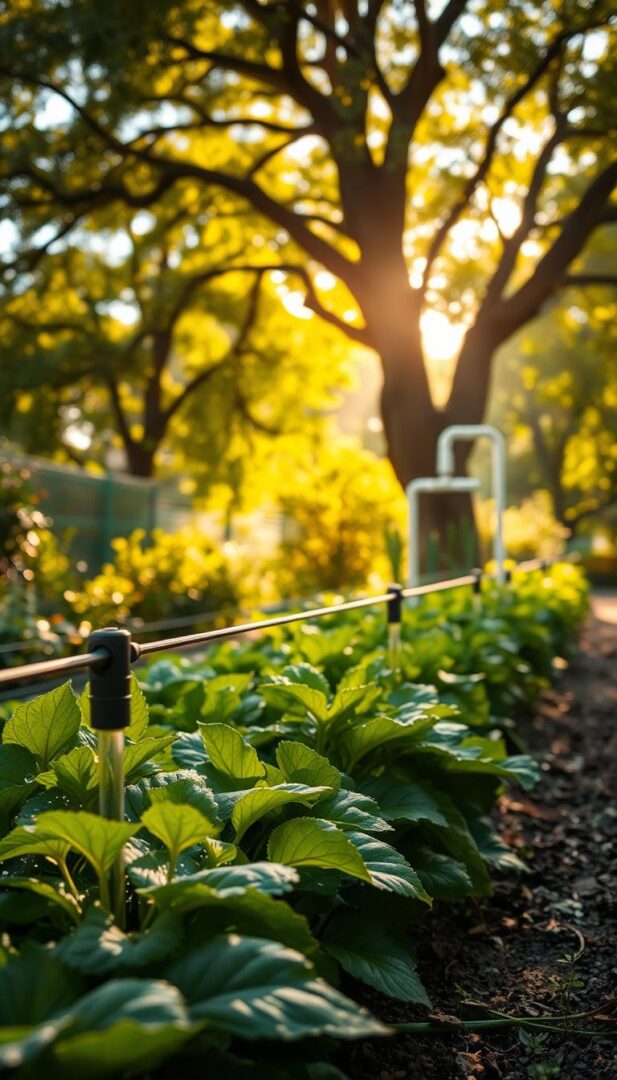
By understanding and addressing these challenges, households can more effectively adopt sustainable water consumption practices, contributing to a more eco-friendly water usage culture.
Measuring the Impact of Your Water Conservation Efforts
Understanding the effectiveness of your water-saving efforts is crucial for long-term sustainability. By tracking and evaluating your progress, you can identify areas for improvement and make informed decisions.
Tracking Water Usage Reductions
Monitor your water bills to see the direct impact of your conservation efforts. Compare your current usage to previous periods to quantify reductions.
Calculating Environmental and Financial Benefits
Assess the environmental benefits by considering the amount of water saved and its impact on local ecosystems. Financially, calculate the savings on your water bills.
Sharing Success Stories and Inspiring Others
Share your experiences with friends, family, and community groups to inspire others to adopt environmental water practices. Highlighting success stories can motivate a broader movement towards sustainability.
By following these steps, you can effectively measure the impact of your water conservation tips and continue to make a positive difference.
Conclusion: Creating a Sustainable Water Future
By adopting the 5 sustainable water usage practices discussed, individuals can significantly contribute to creating a sustainable water future. Implementing these practices not only reduces water waste but also promotes sustainable water consumption.
The 5 ways to make your water usage more sustainable include installing water-efficient fixtures, implementing rainwater harvesting systems, adopting water-wise landscaping techniques, modifying daily water usage habits, and detecting and repairing water leaks. By incorporating these practices into daily life, households can make a significant impact on reducing their water footprint.
As individuals and communities work together to adopt these sustainable practices, we can create a significant positive impact on the environment. Sustainable water consumption is crucial for preserving this vital resource for future generations. By making these simple changes, we can ensure a more water-secure future.

